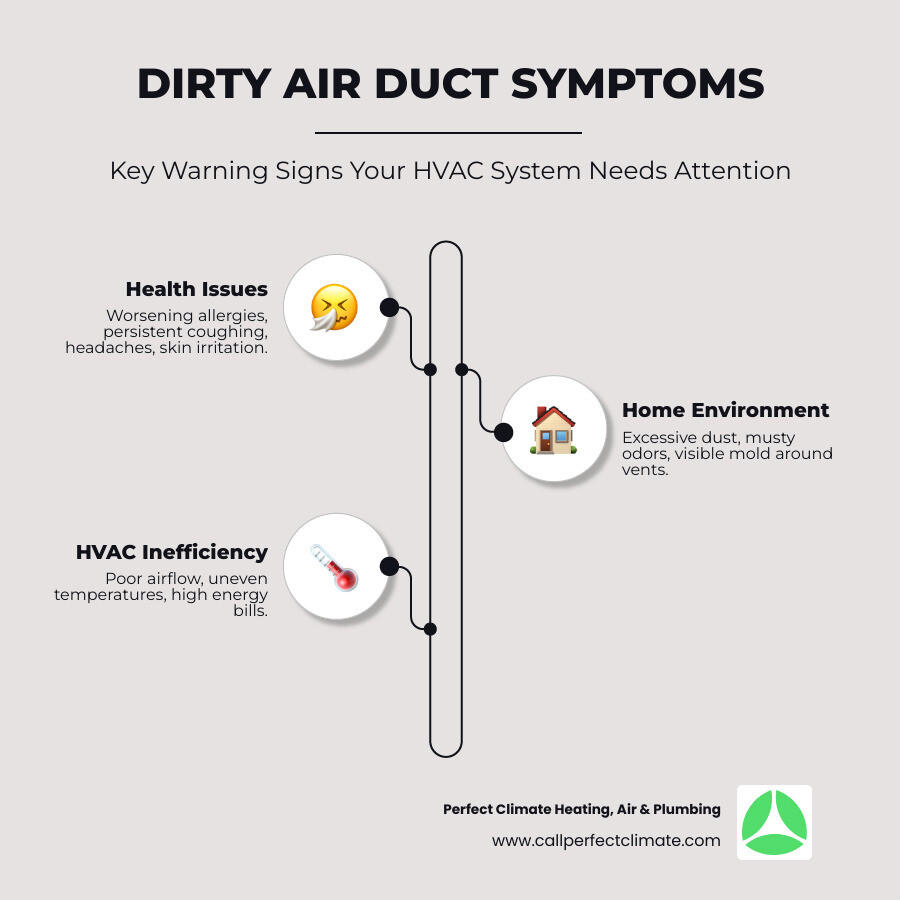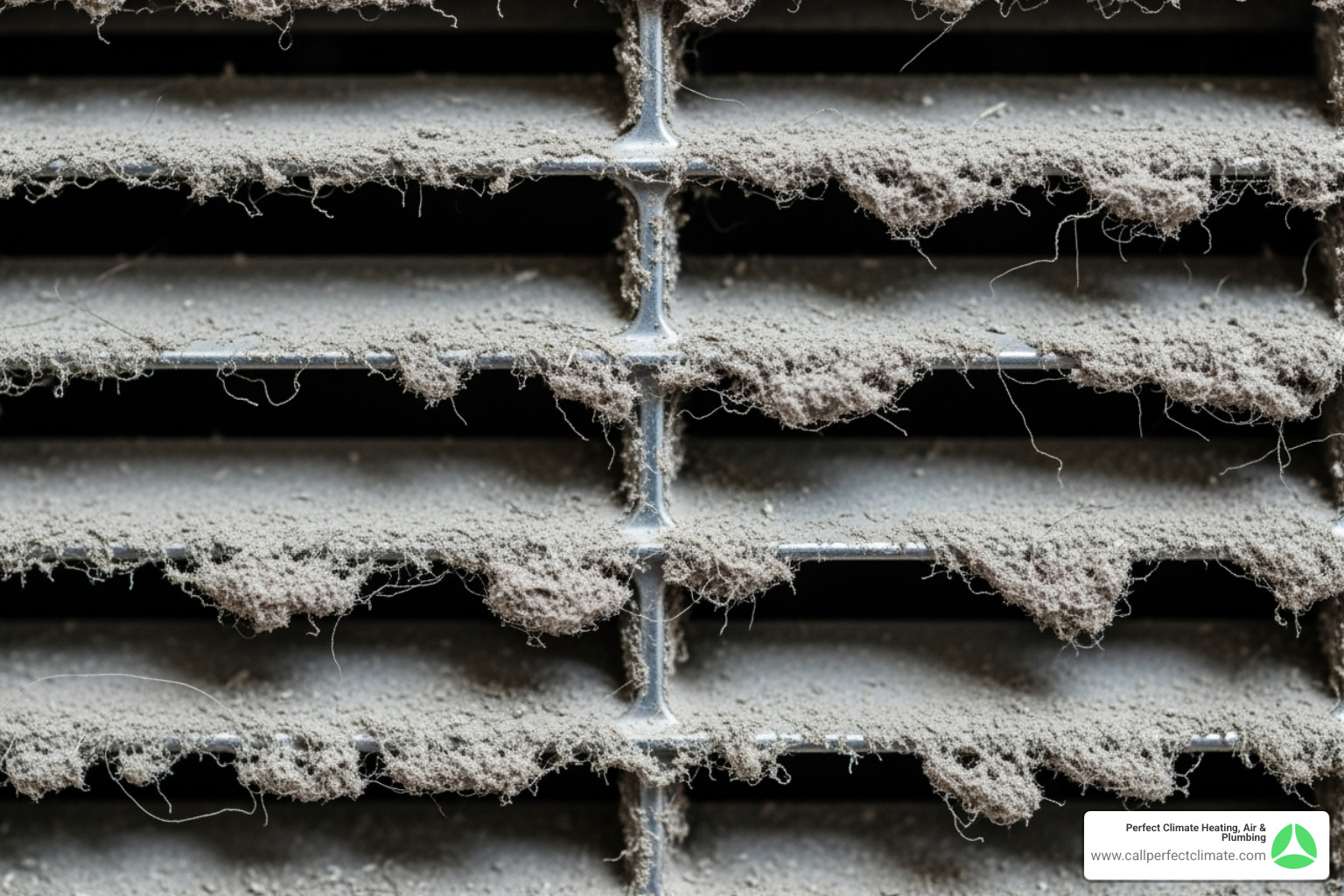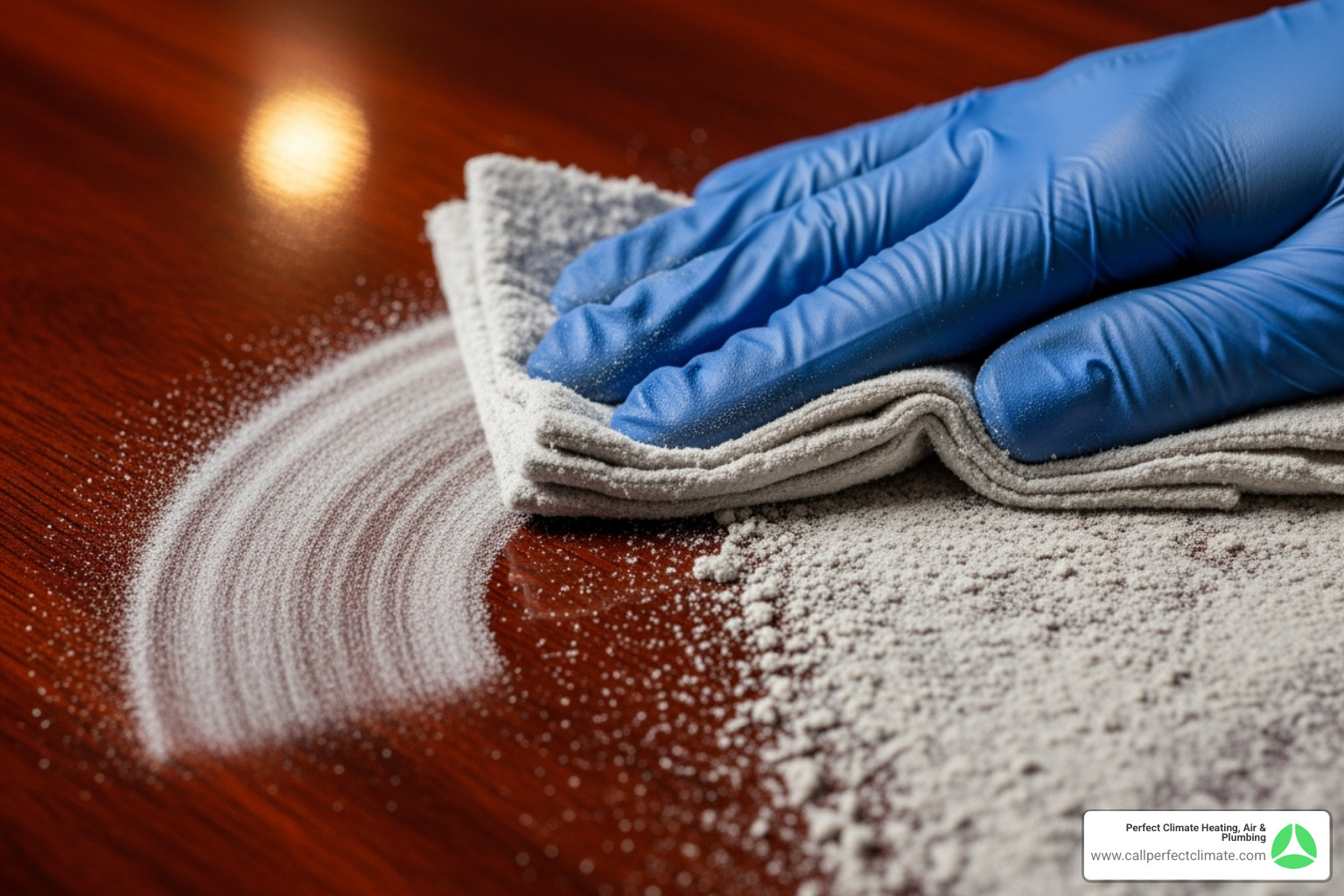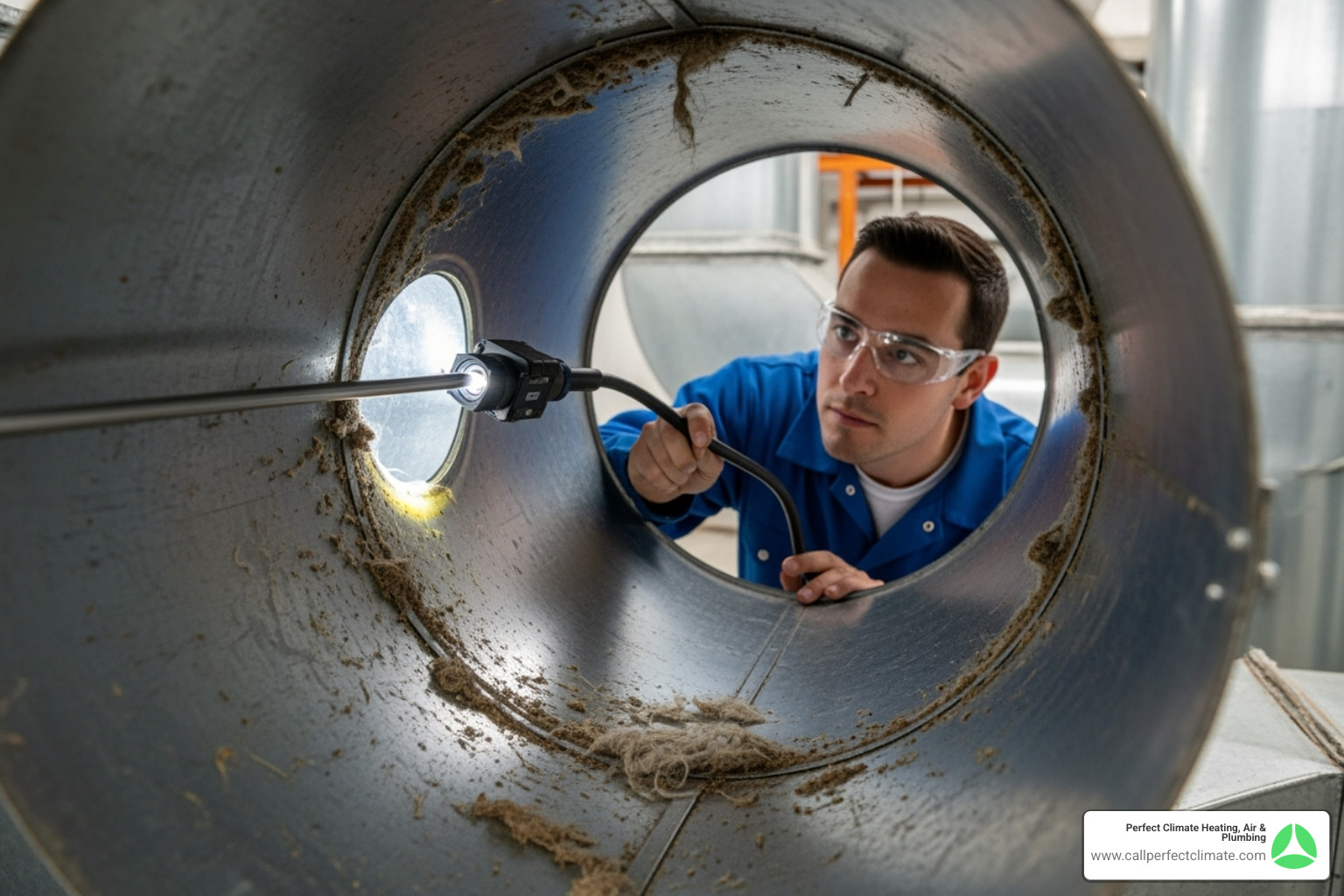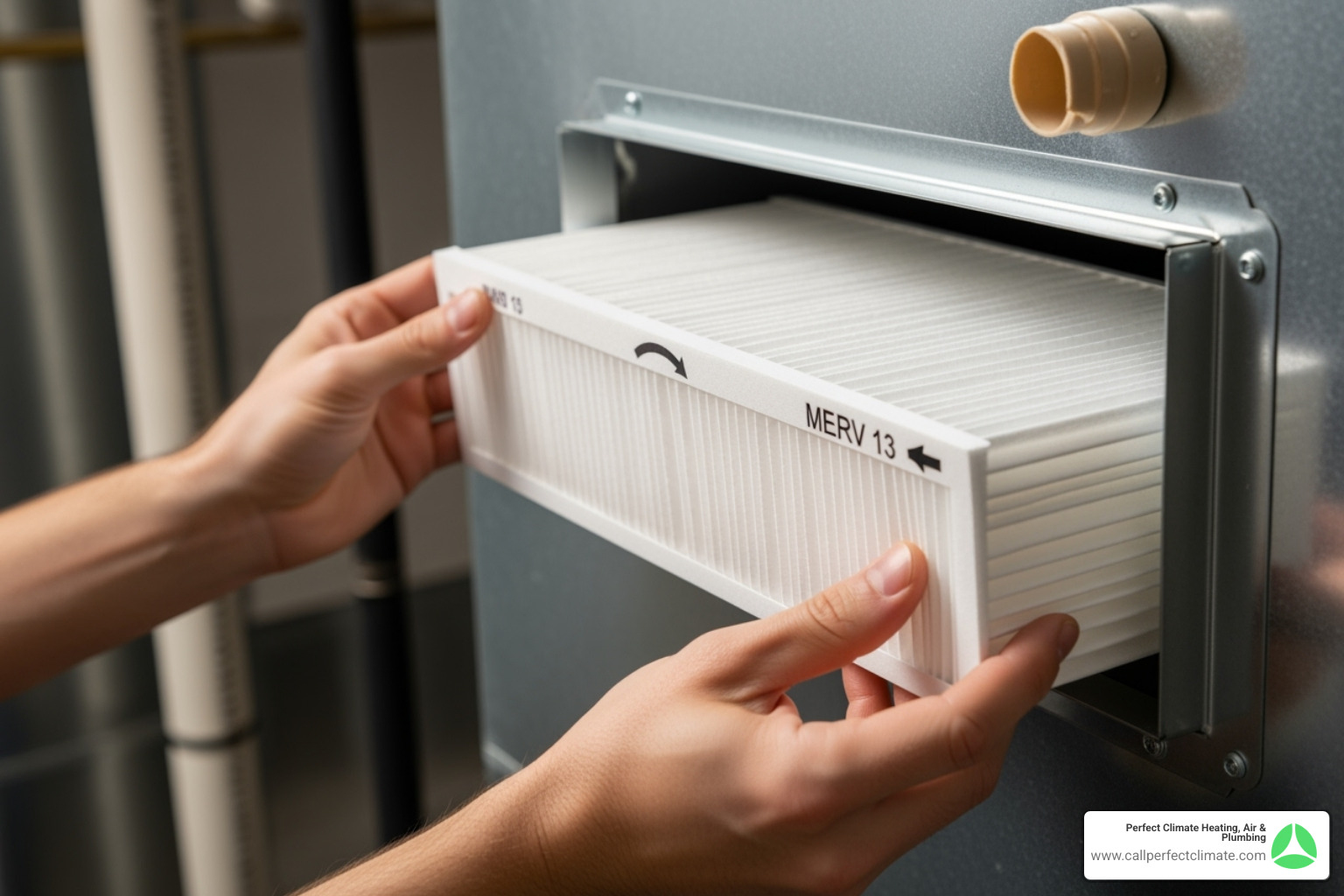Why Recognizing Dirty Air Duct Symptoms Matters
Dirty air duct symptoms can signal serious problems hiding in your home’s HVAC system. While your ducts stay out of sight, they might be circulating dust, mold, and other contaminants throughout your living space.
The most common dirty air duct symptoms include:
- Health issues: Worsening allergies, persistent coughing, unexplained headaches, and skin irritation
- Home environment problems: Excessive dust buildup, musty odors, and visible mold around vents
- HVAC inefficiency: Poor airflow, uneven temperatures, and unusually high energy bills
- Pest-related signs: Droppings near vents, unpleasant animal odors, and scratching sounds
Research shows that patients with respiratory conditions often see improvements when their homes receive regular air duct cleaning. If your family experiences frequent cold-like symptoms – coughing, sneezing, sore throats, or nasal congestion – dirty ducts could be the hidden culprit.
The mold and bacteria circulating through contaminated ductwork can also trigger skin problems like eczema and rashes. Even more concerning, your HVAC system might be working overtime to push air through clogged ducts, driving up your energy costs significantly.
Understanding these warning signs helps you protect both your family’s health and your wallet.
What’s Lurking in Your Ductwork? Common Contaminants
Your home’s air ducts might look innocent enough from the outside, but they can harbor some truly unwelcome guests. When dirty air duct symptoms start showing up in your daily life, it’s usually because these hidden contaminants have been building up for months or even years.
Dust and dust mites are probably the most common culprits. These microscopic creatures love nothing more than feasting on dead skin cells that naturally accumulate in your ductwork. If you have pets, pet dander joins the party – those tiny flakes of skin and fur that seem to find their way everywhere, including deep into your ventilation system.
Pollen is another frequent visitor, especially during spring and fall. It sneaks in through windows, doors, and even on your clothes, eventually settling into your ducts where it waits to trigger your next sneezing fit.
But here’s where things get more concerning. When moisture meets your ductwork, it creates the perfect breeding ground for mold spores, mildew, and various fungi. These unwelcome organisms don’t just sit quietly – they actively release microscopic spores that circulate throughout your home every time your HVAC system runs.
Bacteria and viruses can also hitch rides on dust particles, turning your air ducts into a highway for germs. Even more unsettling, rodents and insects sometimes make themselves at home in your ductwork, leaving behind droppings and other waste that gets picked up by your system’s airflow.
If you’ve had recent renovations, construction debris like sawdust and drywall particles might be lurking in there too. All of these contaminants work together to create poor indoor air quality that directly affects your family’s comfort and health.
Understanding what’s hiding in your ducts is the first step toward cleaner air. For a deeper dive into how clean ducts can benefit your family, explore our guide on the Impact of Clean Ducts on Health.
Top Signs & Dirty Air Duct Symptoms to Watch For
Your home has its own way of telling you when something’s wrong – and dirty air duct symptoms are no exception. Think of these signs as your house’s way of raising its hand and saying, “Hey, I need some help here!” The tricky part is that these symptoms often creep up gradually, making them easy to dismiss as just part of everyday life.
We’ve found it helpful to break down these warning signs into three clear categories. This way, you can play detective in your own home and figure out whether those mysterious health issues, household annoyances, or skyrocketing energy bills might actually be connected to what’s hiding in your ductwork.
Health-Related Dirty Air Duct Symptoms
Here’s something that might surprise you: your body is often the first alarm system when it comes to dirty air ducts. If you’ve been wondering why your family seems to be sniffling, sneezing, and feeling under the weather more than usual, contaminated ductwork could be the hidden culprit.
Worsening allergies are probably the most common complaint we hear about. You know how it goes – one day your seasonal allergies are manageable, and suddenly they’re making your life miserable year-round. When dust mites, pollen, and pet dander build up in your ducts, they get a free ride throughout your entire home every time your system runs.
Increased asthma attacks often go hand-in-hand with dirty ducts. The same allergens that trigger regular allergy symptoms can send someone with asthma to reach for their inhaler more frequently. It’s particularly heartbreaking when we see families struggling with children’s breathing issues, not realizing their home’s air system might be part of the problem.
Then there are those mysterious respiratory symptoms that seem to come out of nowhere. Unexplained coughing, persistent sneezing, and sinus congestion that just won’t quit can all point to contaminated air circulation. Studies have shown that families often experience upper respiratory infections – complete with coughing, sneezing, sore throats, and runny noses – when their ducts are loaded with bacteria and other nasties.
But the effects don’t stop at your lungs. Many people don’t realize that headaches, general fatigue, and that overall feeling of being run-down can actually stem from poor indoor air quality. Your body works overtime fighting off airborne contaminants, leaving you feeling drained and sluggish. To understand more about this connection, check out How Dirty Air Ducts Impact IAQ.
Even your skin can rebel against dirty air. Skin irritation and eczema flare-ups often improve dramatically after professional duct cleaning. It turns out that mold spores and other airborne irritants don’t just affect your breathing – they can trigger skin reactions too.
Home Environment: Physical Dirty Air Duct Symptoms
Sometimes dirty air duct symptoms are staring you right in the face – literally. Your home environment can tell quite a story about what’s happening inside your ductwork, and once you know what to look for, the signs become pretty obvious.
Let’s start with the most frustrating one: excessive household dust. You know that feeling when you’ve just spent your Saturday morning dusting every surface, only to find a fresh layer of dust by Tuesday? That’s not normal, and it’s definitely not fair to your cleaning efforts! When your ducts are clogged with debris, they essentially become dust distribution systems, coating your furniture, electronics, and countertops faster than you can keep up.
Musty or stale odors are another dead giveaway. If your home has developed a persistent smell that you just can’t shake – especially when your HVAC system kicks on – you’re likely dealing with mold, mildew, or dust buildup inside your ductwork. Sometimes this smell comes from dust actually burning on your system’s heating elements. Either way, it’s not the kind of “home sweet home” scent anyone wants. Our guide on how to Eliminate Musty Odors: Air Duct Cleaning can help you tackle these unwelcome aromas.
Visible mold growth on vents is like seeing the tip of the iceberg – if it’s growing around your registers where you can see it, there’s probably much more lurking inside your ductwork where you can’t. Mold doesn’t just smell bad; it can seriously aggravate allergies and respiratory problems for your entire family.
Perhaps the most unpleasant findy is signs of pest infestation. Mice, squirrels, insects, and other unwanted tenants sometimes find their way into air ducts, treating them like their personal highway system. These critters leave behind droppings near vents and create unpleasant smells from pests – not to mention the bacteria and health risks that come with their presence. If you’re hearing scratching sounds from your walls or noticing droppings around your vents, it’s time to call in the professionals.
HVAC System Inefficiency
Your HVAC system is like the heart of your home’s comfort, and when dirty ducts start interfering with its rhythm, you’ll definitely notice. These dirty air duct symptoms hit you right where it hurts most – your comfort and your wallet.
Poor airflow is usually the first thing homeowners notice. Remember when your vents used to blow air with authority? If you’re now holding your hand up to a register and barely feeling a whisper, accumulated grime is likely blocking your system’s ability to move air effectively. This leads to uneven heating or cooling throughout your home, where your living room might be perfectly comfortable while your bedroom feels like a different climate zone entirely.
The result? Rooms feeling stuffy and uncomfortable, no matter how much you adjust the thermostat. Your system is working hard, but the air just isn’t moving the way it should.
Here’s where things get really frustrating: unusually high energy bills. When your ducts are dirty, your HVAC system has to work overtime to push air through all that buildup. It’s like trying to breathe through a straw – possible, but exhausting. This extra effort translates directly into higher energy consumption, and you’ll see the evidence on your monthly utility bill. If you’re comparing this year’s bills to last year’s and wondering what happened, dirty ducts might be your answer.
You might also notice that your HVAC system runs constantly, cycling on and off more frequently or running for much longer periods than it used to. The system is essentially struggling to do its job, compensating for restricted airflow and reduced efficiency. Along with this constant operation often comes noisy ductwork – those rattling, whistling, or whooshing sounds that indicate your system is straining to push air through constricted passages.
All of this adds up to more than just inconvenience. Your system is working harder, costing you more money, and potentially wearing out faster than it should. Professional Air Duct Cleaning and Sealing can restore your system’s efficiency and get your home back to running smoothly.
The EPA’s View: When is Duct Cleaning Necessary?
Here’s something that might surprise you: the U.S. Environmental Protection Agency doesn’t recommend routine air duct cleaning for every home. Despite what you might see in some aggressive marketing campaigns, the EPA takes a more measured approach to when duct cleaning is actually necessary.
The EPA’s stance is pretty straightforward – they haven’t found conclusive evidence that regular duct cleaning prevents health problems or that dirty ducts automatically lead to poor indoor air quality. Much of the dust and debris in your ducts often sticks to the surfaces and doesn’t necessarily make its way into your living spaces. It’s not the doom-and-gloom scenario some would have you believe.
But don’t worry – this doesn’t mean you should ignore obvious dirty air duct symptoms. The EPA does recommend cleaning in specific situations where real contamination has occurred.
Visible mold growth is the big red flag here. If you can see substantial mold inside your hard surface ducts or on other HVAC components, it’s definitely time to call in the professionals. That musty smell we talked about earlier? It could be your nose detecting what your eyes can’t see yet. Just remember, cleaning the mold is only part of the solution – you’ll need to fix whatever moisture problem caused it in the first place.
Vermin infestation is another clear-cut case for cleaning. Nobody wants to think about mice or insects making themselves at home in their ductwork, but it happens. These unwelcome guests leave behind droppings, nesting materials, and other nasty surprises that definitely need professional removal.
The third scenario involves clogged ducts with excessive debris. If your ducts are so packed with dust and debris that you can actually see particles blowing out of your vents, that’s when cleaning makes sense. This goes beyond normal dust accumulation – we’re talking about significant buildup that’s actively affecting your air quality.
The EPA also has some important warnings about chemical treatments. They don’t recommend routine use of biocides or sealants in air ducts, citing concerns about effectiveness and potential health reactions. Good old-fashioned physical cleaning is the way to go.
When you do decide cleaning is necessary, choosing the right professional matters. The EPA suggests using certified providers, and we recommend checking out Find a NADCA professional to locate qualified technicians in your area. This ensures the job gets done right without creating new problems.
The bottom line? Trust your instincts, but don’t panic. If you’re experiencing clear dirty air duct symptoms like the ones we’ve outlined, professional cleaning can make a real difference in your home’s comfort and air quality.
Preventing Future Contamination and Improving Air Quality
Once you’ve dealt with dirty air duct symptoms, the next logical step is making sure they don’t come back to haunt you. Think of it as putting up a good defense system for your home’s air quality – a little prevention now can save you from bigger headaches (literally!) down the road.
The absolute best thing you can do is stay on top of your regular filter changes. Your HVAC filter is like a bouncer at a club – it decides what gets into your ductwork and what doesn’t. When that filter gets clogged with dust and debris, it basically throws in the towel and lets everything through. We recommend swapping out your filter every one to three months, but if you’ve got furry family members or anyone with allergies, you might need to change it even more often.
Speaking of filters, high-efficiency particulate air (HEPA) filters are worth the investment. These powerhouses can trap particles so tiny you’d need a microscope to see them. They’re especially helpful if you’re dealing with pet dander, pollen, or other microscopic troublemakers. To learn more about how these work, check out the EPA’s explanation of What is a HEPA filter?
Now, here’s something many homeowners don’t think about: sealing duct leaks. Picture this – you’ve got a pristine filter doing its job, but meanwhile, your leaky ducts are pulling in unfiltered air from your attic or crawl space. It’s like having a security guard at the front door while leaving all the windows wide open! Sealing these leaks not only prevents contamination but also helps your system run more efficiently.
Managing home humidity is another game-changer, especially when it comes to preventing mold growth. Mold loves moisture like kids love candy, so keeping your indoor humidity between 30% and 50% makes your ducts a much less appealing place for these unwelcome guests to set up shop. A good dehumidifier can work wonders, particularly during those sticky summer months.
If you’re planning any home renovations, here’s a pro tip: post-renovation cleaning is absolutely essential. Construction work creates an incredible amount of dust and debris that can easily find its way into your HVAC system. Before starting any major work, seal off your vents and avoid running your system during the dustiest phases. Once everything’s finished, give your home a thorough cleaning – and consider having your ducts inspected too.
For a comprehensive approach to keeping your indoor air fresh and clean, our guide on How to Improve the Indoor Air Quality in Your Home: Easy Methods to Try Today offers practical strategies you can implement right away.
By staying consistent with these preventative measures, you’ll dramatically reduce the chances of experiencing those troublesome dirty air duct symptoms again. Your family’s health – and your wallet – will thank you for it.
Frequently Asked Questions about Air Duct Health
As homeowners become more aware of indoor air quality, we hear the same questions time and again. Let’s tackle the most common concerns about dirty air duct symptoms and air duct cleaning.
How often should air ducts be cleaned?
This might be the number one question we get, and honestly, there’s no one-size-fits-all answer. The general recommendation floating around is every 3-5 years, but your home’s unique situation matters much more than any blanket timeline.
Think about your household for a moment. Do you have pets that leave fur tumbleweeds rolling across your floors? Are family members constantly battling allergies or asthma? Do you live somewhere dusty or near ongoing construction? These factors can mean you’ll need cleaning more frequently than someone in a different situation.
Recent renovations are a big game-changer too. All that sawdust and drywall debris has to go somewhere, and unfortunately, a lot of it ends up in your ductwork. The same goes if you’ve dealt with flooding or fire damage.
On the flip side, remember what we discussed about the EPA’s stance – they don’t recommend routine cleaning unless you’re seeing specific problems like visible mold, pest infestations, or excessive debris. The best approach? Pay attention to those dirty air duct symptoms we covered earlier and let your home tell you when it’s time.
For a more detailed breakdown of timing factors, check out our comprehensive guide on How Often Should You Clean Air Ducts?.
Can dirty air ducts really make my family sick?
The short answer? Absolutely, yes. While the EPA notes that cleaning hasn’t been proven to prevent health problems across the board, the evidence is pretty clear that dirty ducts can make existing problems worse and create new ones.
Here’s what happens: your ducts become like a highway system for allergens – pollen, dust mites, pet dander – all getting a free ride throughout your home. For family members with allergies or asthma, this means more frequent and severe attacks. It’s like having a constant low-level exposure to everything that makes you sneeze and wheeze.
But it goes beyond just allergies. Mold spores, bacteria, and viruses love to set up shop in dirty, damp ductwork. When your system kicks on, these unwelcome guests get distributed to every room. The result? More respiratory infections, persistent coughing, unexplained headaches, and that general “blah” feeling that makes you wonder why everyone in the house seems to have a perpetual cold.
Your skin can suffer too. Eczema flare-ups, rashes, and hives can all be triggered by the mold and other irritants circulating through contaminated ducts. Your body is essentially fighting a constant battle against airborne contaminants, which explains why you might feel tired and run-down for no apparent reason.
While dirty ducts might not be the root cause of every sniffle, they can definitely be the reason your family can’t seem to get and stay healthy. The risks of ignoring these issues go beyond just feeling uncomfortable – learn more in our article about Ignoring Air Duct Cleaning Dangers.
What are the risks of using chemical biocides in ducts?
This is where things get a bit controversial in our industry, and frankly, it’s an area where caution is your best friend. The EPA doesn’t recommend routine use of chemical biocides (those substances designed to kill mold, bacteria, and other microorganisms) in air ducts, and we agree with that stance.
The biggest concern is potential health reactions. Yes, these chemicals kill microorganisms, but they’re still chemicals. Their residues can become airborne and cause irritation or allergic reactions, especially in people who are already sensitive to airborne contaminants. It’s a bit like solving one problem by potentially creating another.
Most biocide products aren’t even registered for use in the fiberglass duct board or fiberglass-lined ducts that are common in modern homes. A few products are approved for bare sheet metal ducts, but they come with strict application requirements and should only be used after thorough physical cleaning – and only if absolutely necessary.
Here’s the thing that really matters: if you don’t fix the underlying moisture problem that allowed mold or bacteria to grow in the first place, any chemical treatment is just a temporary band-aid. The problem will come back, often worse than before.
The same goes for sealants that claim to “encapsulate” contaminants. While manufacturers make big promises, laboratory tests show these products may not coat surfaces evenly, and we simply don’t know enough about their long-term safety or how they’ll affect your ductwork over time.
At Perfect Climate, we focus on mechanical cleaning methods that physically remove contaminants rather than trying to kill them with chemicals. It’s safer for your family and more effective in the long run. For more technical details about how these substances are regulated, you can explore resources on More on regulating antimicrobial pesticides.
Breathe Easier with Professional Air Duct Cleaning
When you start recognizing those telltale dirty air duct symptoms in your home, it’s like your house is sending you a message. Maybe it’s that persistent cough that won’t go away, or the way dust seems to magically reappear on your furniture minutes after cleaning. Perhaps it’s those sky-high energy bills that make you wince every month, or that musty smell that greets you when the AC kicks on.
These aren’t just minor inconveniences – they’re your home’s way of telling you it needs help. And honestly, ignoring them won’t make them disappear (trust us, we’ve seen homeowners try).
Professional air duct cleaning goes far beyond what you might expect. We’re removing that visible dust and debris, but we’re really tackling the invisible threats too. We’re talking about those microscopic mold spores floating around, the pet dander that makes your guests sneeze, and yes, even the occasional mouse droppings that nobody wants to think about. When we clear out these accumulated contaminants, something amazing happens – your whole home starts breathing better.
Your family notices the difference almost immediately. Allergy symptoms often improve dramatically, that constant stuffiness starts to lift, and those unexplained headaches might just become a thing of the past. Your HVAC system gets a new lease on life too, working more efficiently and potentially saving you money on those monthly utility bills.
Here in Haubstadt and throughout the Evansville area, we understand the unique challenges our Indiana climate brings. The humidity, the seasonal pollen, the way our homes are built – it all affects how contaminants build up in your ductwork. At Perfect Climate Heating, Air & Plumbing, we’ve been helping local families breathe easier for years, using advanced equipment and following the strictest industry standards.
The truth is, everyone deserves to feel comfortable and healthy in their own home. If you’ve been noticing any of those dirty air duct symptoms we’ve talked about – whether it’s health issues, home environment problems, or HVAC inefficiency – don’t let them linger and get worse.
Ready to give your family the gift of cleaner air? For a comprehensive evaluation and professional cleaning service right here in the Haubstadt area, check out our air duct cleaning services. Let’s help you create the healthy, comfortable home your family deserves.

